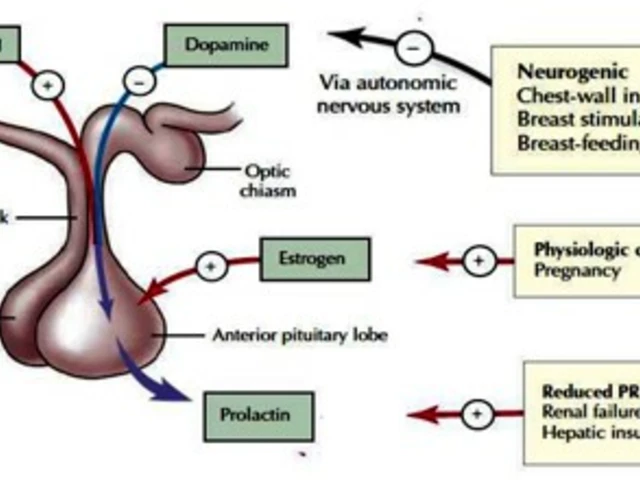Cholinesterase Inhibitors: How They Work and Why They Matter
When working with cholinesterase inhibitors, drugs that block the breakdown of the neurotransmitter acetylcholine. Also known as acetylcholinesterase blockers, they are a cornerstone in treating cognitive decline. The primary target is acetylcholinesterase, the enzyme that rapidly degrades acetylcholine in the synaptic cleft. By inhibiting this enzyme, the drugs increase acetylcholine levels, which helps improve signal transmission in the brain. A second, often‑overlooked enzyme is butyrylcholinesterase, which also contributes to acetylcholine breakdown, especially in later stages of disease; some newer inhibitors affect both enzymes for broader effect. The therapeutic relevance of cholinesterase inhibition shines in Alzheimer’s disease, where loss of cholinergic neurons is a hallmark. Boosting acetylcholine can modestly improve memory, attention, and daily functioning, even if it doesn’t halt disease progression. Parkinson’s disease patients may also benefit, particularly for cognitive symptoms and gait freezing, because both conditions involve cholinergic deficits. In practice, clinicians weigh the enzyme selectivity, side‑effect profile, and patient comorbidities when choosing an inhibitor. Common agents like donepezil, rivastigmine, and galantamine each have distinct pharmacokinetics: donepezil is once‑daily, rivastigmine can be a patch to reduce GI upset, and galantamine also modulates nicotinic receptors, offering a dual mechanism. Overall, cholinesterase inhibitors require careful monitoring for nausea, diarrhea, bradycardia, and insomnia, but most patients tolerate low‑to‑moderate doses. Emerging research explores reversible inhibitors that spare butyrylcholinesterase to lower adverse events, and combination therapies with NMDA antagonists such as memantine aim to address both cholinergic and glutamatergic pathways. Understanding the enzyme targets, disease contexts, and drug‑specific characteristics helps clinicians maximize benefits while minimizing risks.
Key Uses, Benefits, and Safety Tips
In real‑world practice, the decision to start a cholinesterase inhibitor often follows a thorough cognitive assessment and discussion of treatment goals. If the goal is to preserve independence and delay functional decline, especially in early‑to‑moderate Alzheimer’s, these drugs are a first‑line option. For Parkinson’s patients with prominent dementia or severe attention deficits, adding a cholinesterase inhibitor can complement dopaminergic therapy. Dosage titration is essential: most protocols start low and increase weekly to the target dose, allowing the gastrointestinal system to adapt. Patients should be advised to take the medication with food (except some patches) and to report any episodes of fainting, vivid dreams, or uncontrolled bowel movements. Regular follow‑up, typically every three months, lets the prescriber adjust the dose or switch agents if side effects become intolerable. Beyond the classic uses, research shows potential off‑label benefits in conditions like vascular dementia, traumatic brain injury, and even certain types of mild cognitive impairment. However, evidence varies, and clinicians should weigh the limited data against possible adverse effects. In any case, patient education—explaining that these drugs improve symptoms rather than cure the disease—sets realistic expectations and enhances adherence. Below you’ll find a curated set of articles that dive into related health topics such as infection‑related fatigue, motion‑sickness treatments, antibiotic comparisons, and more. Together, they provide a broader picture of medication management, side‑effect awareness, and practical tips that complement the understanding of cholinesterase inhibitors.

Aricept (Donepezil) vs Alternatives: A Detailed Comparison
Compare Aricept (Donepezil) with other Alzheimer’s drugs, covering efficacy, side effects, cost and who should use each.
View More




